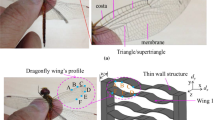Abstract
The conventional linkage mechanisms with compliant joint have been widely studied and implemented for increasing the adaptability of the mechanism to external contacts. However, the analysis of how compliant joints in linkage mechanism can reduce the energy consumption isn’t still studied deeply. In a mobile service robot head, the actions of blinking the eyes and moving the eyeballs are realized by the planar linkage mechanism respectively. Therefore, minimizing the driving torques through motion trajectories for the linkage mechanism, which will be beneficial to extend the working time for mobile service robots. The dynamic modeling of the linkage mechanism with springs-loaded compliant joint is established. An optimization procedure for obtaining the optimal parameters of springs is proposed for minimizing the max value of driving torques within a range of desired operating conditions. The Simulations prove that the linkage mechanism with compliant joints can effectively reduce the driving torques, and reduce the energy consumption consequently. The framework can also be applied in other similar applications to reduce the driving torque and save energy. Compared with previous efforts, this is the first attempt that the linkage mechanism with complaint joint is applied in the robot head for reducing the driving torque.
Similar content being viewed by others
References
LIU Chen, QUEK A J S, SIM S J A, et al. I know u-a proposed vui design for improving user experience in hri[M]//Cross-Cultural Design. Methods, Practice, and Case Studies. Springer Berlin Heidelberg, 2013: 228–234.
MEHRABIAN A. Communication without words[J]. Psychological Today, 1968, 2(4): 53–55.
KRIVOHLAVY J. Facial action coding system[R]. Ceskoslovenska Psychologie, 1979, 23(3): 251–251.
DONATO G, BARTLETT M S, HAGER J C, et al. Classifying facial actions[J]. IEEE Transactions on Pattern Analysis and Machine Intelligence, 1999, 21(10): 974–989.
KOBAYASHI H, HARA F. Analysis of the neural network recognition characteristics of 6 basic facial expressions[C]//IEEE International Workshop on Robot and Human Communication, Nagoya, Japan, July 18–20, 1994: 222–227.
BREAZEAL C. Emotion and sociable humanoid robots[J]. International Journal of Human-Computer Studies, 2003, 59(1): 119–155.
SALDIEN J, GORIS K, VANDERBORGHT B, et al. Expressing emotions with the social robot probo[J]. International Journal of Social Robotics, 2010, 2(4): 377–389.
HASHIMOTO T, HITRAMATSU S, TSUJI T, et al. Development of the face robot SAYA for rich facial expressions[C]//SICE-ICASE International Joint Conference, IEEE. Busan, Korea, October 18–21, 2006: 5423–5428.
MIWA H, ITOH K, MATSUMOTO M, et al. Effective emotional expressions with expression humanoid robot WE-4R II: integration of humanoid robot hand RCH-1[C]//Proceedings of 2004 IEEE/RSJ International Conference on Intelligent Robots and Systems, Sendai, Japan, September 28–October 2, 2004: 2203–2208.
PARK I W, KIM J Y, CHO B K, et al. Control hardware integration of a biped humanoid robot with an android head[J]. Robotics and Autonomous Systems, 2008, 56(1): 95–103.
HIRTH J, SCHMITZ N, BERNS K. Emotional architecture for the humanoid robot head ROMAN[C]//2007 IEEE International Conference on Robotics and Automation, Roma, Italy, April 10–14, 2007: 2150–2155.
SHIN K C. Deployment of personal service robots for education and task services[C]//RO-MAN, 2011 IEEE, Atlanta, USA, July 31–August 3, 2011.
WU Weiguo, MENG Qingmei, WANG Yu. Development of the humanoid head portrait robot system with flexible face and expression[C]//IEEE International Conference on Robotics and Biomimetics, Shenyang, China, August 22–26, 2004: 757–762.
SCHAUSS T, SCHEINT M, SOBOTKA M, et al. Effects of compliant ankles on bipedal locomotion[C]//IEEE International Conference on Robotics and Automation, Kobe, Japan, May 12–17, 2009: 2761–2766.
MOMBAUR K D, LONGMAN R W, BOCK H G, et al. Open-loop stable running[J]. Robotica, 2005, 23(1): 21–33.
PASHKEVICH A, KLIMCHIK A, CHABLAT D. Enhanced stiffness modeling of manipulators with passive joints[J]. Mechanism and Machine theory, 2011, 46(5): 662–679.
DOLLAR A M, HOWE R D. The highly adaptive SDM hand: Design and performance evaluation[J]. The International Journal of Robotics Research, 2010, 29(5): 585–597.
BALASUBRAMANIAN R, BELTER J T, DOLLAR A M. Disturbance response of two-link underactuated serial-link chains[J]. Journal of Mechanisms and Robotics, 2012, 4(2): 021013.
BORRÀS J, DOLLAR A M. Static analysis of parallel robots with compliant joints for in-hand manipulation[C]//2012 IEEE/RSJ International Conference on Intelligent Robots and Systems(IROS), Vilamoura, Portugal, October 7–12, 2012: 3086–3092.
BORRÀS J, DOLLAR A M. Actuation torque reduction in parallel robots using joint compliance[J]. Journal of Mechanisms and Robotics, 2014, 6(2): 021006.
Author information
Authors and Affiliations
Corresponding author
Additional information
Supported by National Natural Science Foundation of China(Grant No. 51105089), Shenzhen Engineering Laboratory of Industrial Robots and Systems(Grant No. A224412028), and Shenzhen Engineering Laboratory of Performance Robots at Digital Stage(Grant No. [2014]1507)
ZHONG Chunhao, born in 1990, is currently a master candidate at Shenzhen Graduate School, Harbin Institute of Technology, China. His research interests include robot head and structure optimization.
YANG Xiaojun, born in 1977, is currently an association professor at Shenzhen Graduate School, Harbin Institute of Technology, China. His research interests include serial and parallel mechanism, deals with the motion control, dynamics and calibration.
Rights and permissions
About this article
Cite this article
Zhong, C., Yang, X. Driving torque reduction in linkage mechanisms using joint compliance for robot head. Chin. J. Mech. Eng. 28, 888–895 (2015). https://doi.org/10.3901/CJME.2015.0520.073
Received:
Revised:
Accepted:
Published:
Issue Date:
DOI: https://doi.org/10.3901/CJME.2015.0520.073




